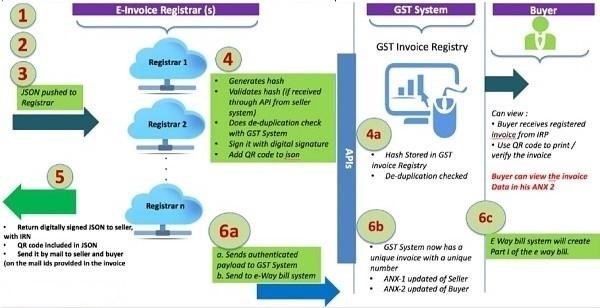Without any signature errors, electronic invoice generation is now possible.
Sounds good right!!!
Nowadays technology has advanced itself through automation practices and such automation reduces human errors and adds accuracy to business operations. Any business can accelerate their invoicing practices and increase cash flow via e-signature tech presence as is authenticated by many governments.
The increasing usage of the web has pushed the values of electronic documentation and online transitions towards the next level. With it, traditional paperwork has become of no use. In this ever-evolving documentation part of the business, electronic signature has become the authenticator.
What is e-invoicing?
E-invoicing stands for electronic invoicing that helps in exchanging any goods between a supplier and a buyer authentically. Usually, in such a process paperwork gets involved where one takes the signature of another as a receipt on an invoice but with the digitally evolving world, this process has also become digital with the availability of e-signature.
What is e-Signature?
The e-signature (electronic signature) is a legally binding and government-approved efficient digitally made signature on a digital document that authenticates the sender or receiver’s identity. Securely and verifiably, it has the capability to replace the traditional handwritten signature practices and switch the process to trending virtual processing.
How to add an e-Signature in an e-invoice?
To add an electronic signature to the e-invoice, one needs to assure having software that reads DSC along with an e-signature tool approved by the government portal in their system. With its presence, the admin can follow the below steps,
Step 1: Create a JSON (Javascript Object Notation) format through any technique like offline utilities, mobile apps, and so on.
Step 2: Now log in to the IRP (Insolvency Resolution Process) and attach the JSON.
Step 3: Verify it with DSC.
Step 4: From the available list of e-signatures, select the appropriate signature and proceed. (Note: Be assured that the DSC is an authorised signatory and is the same as registered on the government portal.)
Step 5: Enter the password once the utility prompt and ask you to enter it for the DSC.
With above all steps your process is done and you’ll get a popup notifying your e-signature is successfully added and by clicking on the OK/Proceed button you can move forward to the next process.
Now in the above steps, you might have got confused with the terms JSON and DSC. Let me make it clear in my next segment.
What is DSC?
The DSC is the Digital Signature Certificate used for a human’s authority confirmation. It means, by taking a DSC on e-document any business can verify that the delivered document has been received by the correct party and as a recipient anyone can get an idea that it’s sent by the right authority. Mainly it’s the trust-building certificate between sending and receiving parties for any transitions; be it for business or casual ecommerce processing.
What is JSON and how is it used in e-invoicing?
JSON is JavaScript Object Notation, an open standard file format and data interchange format used for information transfer in human-readable text form. An e-signature carries a java code that any user needs to enter into the e-invoice’s code for authentication. To add that code in the script, JSON is required so that one can read the text added to the invoice.
As mentioned above, the JSON needs to be uploaded onto the IRP with the e-signature as one of the optional parameters.
With the validation confirmation by the IRP, the invoice will be signed electronically through the JSON and create a QR code. Once the supplier/sender delivers a printed copy of an invoice, the recipient will be asked to release the QR Code, his/her e-signature, and the Invoice Reference Number (IRN) created by the IRP. The match of QR code and e-signature of the supplier cannot be interchanged but can be authenticated without any disclosure.
Conclusion:
Ultimately in any business having an e-signature platform like FilesDNA is necessary and has become the most beneficial. With such a tool you can save time, effort, environment, and make all your business operations digitally verified. From internal validation to government-supported invoicing it can be used effectively. Since the pandemic has created a situation where people do not prefer meeting one-to-one, such digital tools have saved many small to large to enterprise-level busin
